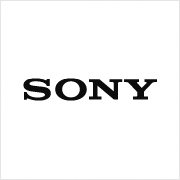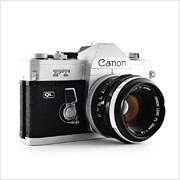Canon FT QL
The Canon FT QL is a manual, mechanical single lens reflex camera introduced by Canon in 1966 and is also the first Canon camera to feature TTL (through the lens) metering. The FT QL belongs to the family of SLRs that were designed around Canon’s short-lived FL breech-lock lens mount which lasted from 1964 until the the FD Mount was introduced in 1970. The FT is very similar to its two older brothers: the FX and the FP with the only real difference being the FX’s lack of TTL metering and the FP’s complete lack of integrated light meter. Also included in this family is the unusual Canon Pellix, the first of only a handful of cameras in history to use a fixed translucent pellicle mirror until the concept was resurrected by Sony in 2010 with its Alpha SLT series. The “QL” designation introduced by the Canon FT QL stands for “Quick Load” which denotes the inclusion of a spring-loaded hinge that assists in the loading of 35mm film. This quick loading system can also be found on other Canon models such as the Canonet QL17 G-III.















